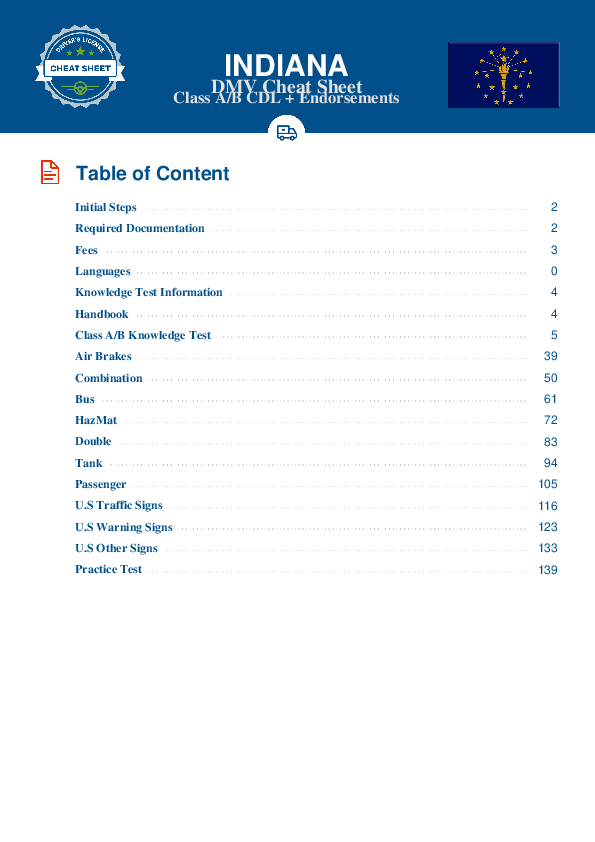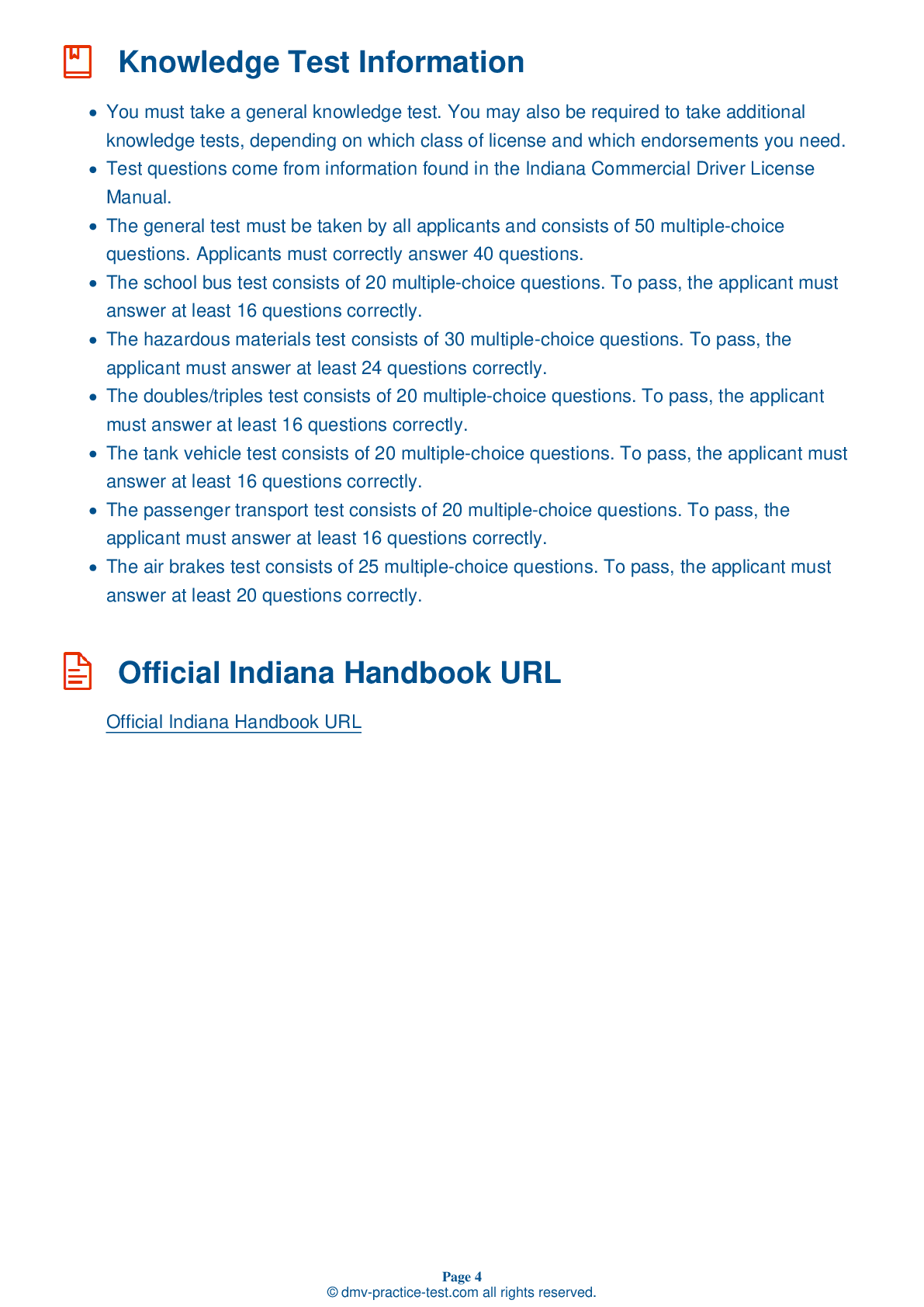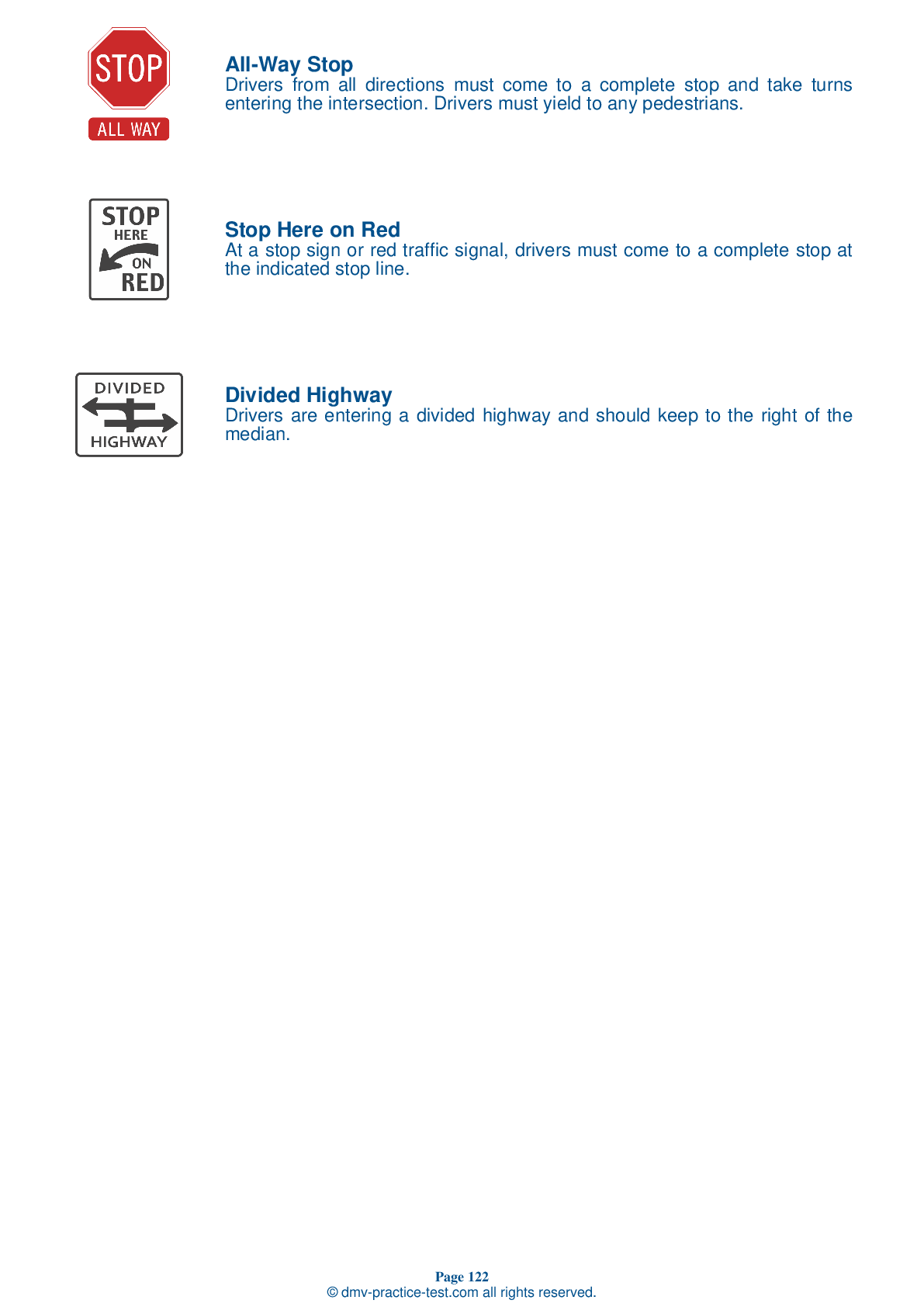Double Triple Test | Indiana 2025 #2
Train for FREE with our Indiana CDL double triple practice test online. The official exam test consists of several obligatory parts, with all of them checking your knowledge of different blocks of road rules. If you need to obtain a IN CDL double triple license in 2025, practice as much as possible. Free sample tests published on our website will help you check and improve your knowledge and boost your grades. Please bear in mind that DMV requirements may vary from state to state.
1 . Which of the following is not an example of a potentially hazardous driver?
Drivers who may be hazardous include those with blocked vision, such as those with icy windshields or blocked rear windows, and those driving unfamiliar vehicles, such as rental trucks.
2 . During a walk-around inspection, ensure there are no cracks on the brake drums that are more than ____ of the width of the friction area.
Before beginning a trip, it is important to check the brake drums during your walk-around inspection. It is unsafe to drive if any brake drum has a crack more than one half of the width of the friction area.
3 . Good vision:
Being able to see clearly is essential to safely driving at any time of day.
4 . Eating while driving:
To reduce the chances of driving distracted, you should avoid eating, drinking, or smoking while driving. Anything that diverts attention from the task of driving is a distraction.
5 . How many daily hours of sleep does an adult need to maintain alertness?
Being properly rested is essential to the safe operation of a CMV. To maintain alertness, most people need eight to nine hours of sleep per night.
6 . The heavier the vehicle:
The heavier a vehicle is, the harder the brakes must work to slow or stop it.
7 . A vehicle inspection:
Drivers are required under federal and state law to inspect their vehicles before every trip. If a vehicle is unsafe, it should be put out-of-service until all defects have been fixed.
See the exact questions that will be on the 2025 Indiana DMV exam.
99.2% of people who use the cheat sheet pass the FIRST TIME
Lillian MCcranie explains how our CDL study guide was helpful in passing the exam and recommends it to everyone.
Cameron tells us how he purchased the CDL exam, and found it to be a useful tool which helped him pass the exam and find a job.



